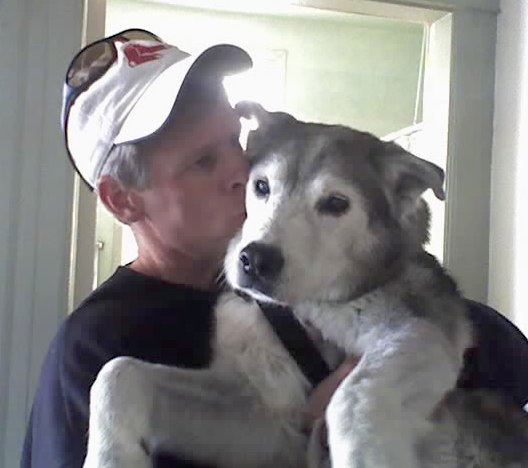 A San Francisco-based consultant in transportation, urban development, energy consumption, and air quality, Dr. John Holtzclaw is chair the Sierra Club's Transportation Committee. Holtzclaw's recent research, for the Natural Resources Defense Council, the Center for Neighborhood Technology and the Surface Transportation Policy Project, has been into how residential density, transit service, and pedestrian and bicycle friendliness reduce auto ownership and driving. It was oriented toward designing convenient, compact, transit-oriented, mixed-use cities, thereby reducing consumption, auto use and waste.
A San Francisco-based consultant in transportation, urban development, energy consumption, and air quality, Dr. John Holtzclaw is chair the Sierra Club's Transportation Committee. Holtzclaw's recent research, for the Natural Resources Defense Council, the Center for Neighborhood Technology and the Surface Transportation Policy Project, has been into how residential density, transit service, and pedestrian and bicycle friendliness reduce auto ownership and driving. It was oriented toward designing convenient, compact, transit-oriented, mixed-use cities, thereby reducing consumption, auto use and waste.
As part of Bike Commute Tips commemoration of the 10th anniversary of the pivotal 1997 confrontation between Critical Mass and San Francisco Mayor Willie Brown, I asked Holtzclaw for his impressions of how San Francisco has changed for bicyclists in the past decade. (Less significantly, 2007 is also the 10th anniversary of my modest bicycle commuting tips website.)
Bike Commute Tips: What is the biggest positive change you've observed for bicycling in San Francisco in the past 10 years?
John Holtzclaw: Besides the obvious improvements of more bike lanes, there are more bikes on the streets, especially on Bike to Work Day. The San Francisco Bicycle Coalition and its members' advocacy has been crucial in this success. Critical Mass has helped convey the idea that bicycling is an important mode. San Francisco's success can be replicated elsewhere.
Bike Commute Tips: There seems to be growing awareness about the damaging ecological consequences of our automobile-dependent transportation system. However, many environmentalists talk more about fuel efficiency, bio-fuels, and electric cars, and rarely mention sustainable transportation alternatives (bicycling, walking, transit.) At the same time, many bike advocates are little concerned with the environment beyond winning a share of space on the streets. How does the bicycling movement fit into the larger environmental movement? How are these movements inter-related? How can we encourage better cross-pollination between environmentalists and bicycling activists?
Holtzclaw: Environmental groups, even the Sierra Club, have been slow to showcase measures that would reduce VMT (vehicle miles traveled.) That's been a great pain to me, but we are making progress now. Global warming is Sierra Club's top priority, and our sprawl website details how good land use (density, mixed-use, streets and sidewalks) and transit service reduce driving. We now have to add such to our global warming and Cool Cities websites. On the national scale, I am presenting our location efficiency research to a committee of the National Academy of Sciences on July 23. The intent is incorporation in future legislation to increase transportation efficiency and reduce pollution. If bikers and pedestrians knew they were a major part of the global warming solution, they might take more interest in it. California's governor hasn't gotten this message, despite signing AB 32 to reduce our global warming emissions.
Bike Commute Tips: You have been a prominent part of the Sierra Club's efforts to fight sprawl. Is sprawl containment/prevention a key for increased bicycling? How can we position bicycling as a component of a more livable, sustainable community?
Holtzclaw: Reversing sprawl is crucial to increasing bicycling and walking. Sprawl increases trip distances and traffic speeds, making biking less attractive to many people. The San Francisco biking, pedestrian and environmental communities get the big picture and are working together on this. My bicycling advocacy is part of that whole Smart Growth and public transit advocacy picture.
Bike Commute Tips: What are the remaining challenges in San Francisco you would most like to see improved in the next decade? Based on your experience as a bicyclist and advocate, how optimistic are you that these challenges will be resolved?
Holtzclaw: Challenges to SF include: implementing congestion pricing; implementing widespread traffic calming (slowing) and returning one-way streets to two-way; and implementing widespread Bus Rapid Transit.
San Francisco officials are also studying London's Congestion Pricing for adoption here. Our city planning department, mayor and Board of Supervisors have reduced required parking for new residential projects in dense neighborhoods and applied it as a "maximum" parking limit.
Bike Commute Tips: Cars are more than simply transportation in our culture, they also represent status, image, affluence. In the same vein, bicycling is often seen as sign of impoverishment ("They can't afford a car.") Is the supposed equation of affluence and happiness a barrier to increased bicycling?
Holtzclaw: A major barrier to intelligent planning to improve our quality of life (QOL) is the influence of conventional economics in the U.S. It prioritizes gro-gro-gro, not QOL. For instance, the French emphasize QOL and one could not visit Paris but agree they have a much higher standard of living--and biking and walking--than we do. Yet (newly elected French President Nicolas) Sarkozy seems to have convinced them they have to compete in the economic gro-gro-gro race. That sucks.
Image: Web capture
Visit: Paul Dorn's Bike Commuting Tips Site
Amazon iframe
Tuesday, July 17, 2007
John Holtzclaw: Cycling Environmentalist
Subscribe to:
Post Comments (Atom)


No comments:
Post a Comment